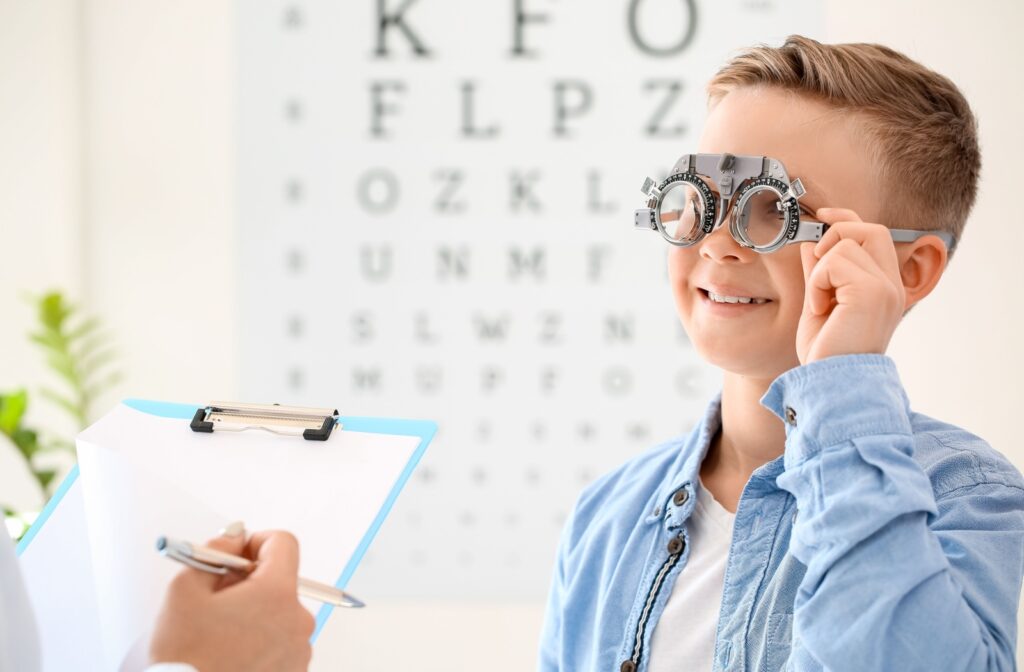Myopia, commonly referred to as nearsightedness, is a vision issue that affects millions of people worldwide. Individuals with myopia can see close-up objects clearly, but struggle to focus on distant objects. This can significantly impact daily activities like driving or attending lectures.
Causes that may lead to myopia worsening include:
- Genetics
- Age
- Environmental factors
- Lifestyle habits
Understanding these contributing factors is crucial for prevention and management strategies to help mitigate the impact of myopia. Your eye doctor can determine a myopia control method right for you.
Causes of Myopia Progression
Genetics
Myopia has been found to have a strong genetic component, meaning it can be inherited from parents. If both parents have myopia, there is a higher chance of their children developing myopia.
Studies have identified several genes that may contribute to the development of myopia, with variations in these genes potentially increasing an individual’s risk. However, it’s important to note that genetics alone cannot account for the rise in myopia rates. Other environmental factors also play a significant role.
Age
Myopia typically starts during childhood, when the eye is still growing. The condition often continues to progress during the teenage years. The exact cause of this age-related progression is not fully understood, but it has been linked to changes in the shape of the eye and increased elongation of the eyeball. This elongation causes light rays to focus in front of the retina instead of directly on it, resulting in blurred vision for distant objects.
Environmental Factors
In recent years, there has been growing concern over the role of environmental factors in the development and progression of myopia. One major contributing factor is prolonged screen time, which has become increasingly prevalent with the rise of technology and digital devices. Studies have shown a correlation between increased screen time and higher rates of myopia, especially among children and young adults.
Lack of outdoor activities and insufficient exposure to natural light have also been linked to higher myopia rates. Spending more time indoors not only reduces exposure to sunlight, but can also lead to prolonged near-work activities such as reading or using electronic devices at close distances.
Lifestyle Habits
Certain lifestyle habits can also play a role in the development of myopia. For example, excessive near-work activities such as reading for long periods without breaks can strain the eyes and potentially lead to myopia progression. Poor lighting conditions while reading or studying can also put additional strain on the eyes.
Moreover, research has shown that a lack of physical activity and a sedentary lifestyle may increase the risk of myopia. Regular exercise and outdoor activities not only promote overall health, but also reduce the risk of myopia development.
Prevention & Treatment
While genetics and environmental factors may play a role in the development of myopia, there are steps that can be taken to prevent or slow its progression. Here are a few tips for promoting good eye health and potentially reducing the risk of myopia:
- Limit screen time and take regular breaks to rest your eyes.
- Increase outdoor activities and exposure to natural light.
- Ensure proper lighting conditions while reading or studying.
- Encourage physical activity and limit sedentary behaviors.
If you or your child already have myopia, there are various treatment options available such as glasses, contact lenses, or orthokeratology (a method of reshaping the cornea with specialized contact lenses). In certain cases, surgery may also be an option. However, it’s important to consult with an eye care professional for proper diagnosis and treatment recommendations.

The Role of Eye Exam
Regular eye exams are crucial in detecting and monitoring myopia. Children should have their first eye exam at the age of 6 months, followed by another at 3 years old, then one more before starting school. After starting school, they should get an eye exam every year. Early detection of myopia can lead to early intervention and potentially prevent or slow the condition’s progression.
Eye exams not only check for visual acuity, but also assess overall eye health and can detect any underlying conditions that may contribute to myopia development. It’s important to prioritize regular eye exams as part of a comprehensive approach to maintaining good eye health.
Personalized Eye Care & Myopia Management at Restore Vision Center
Myopia is a common condition that affects millions of people worldwide. While genetics may play a role in its development, environmental factors and lifestyle habits also have a significant impact. By taking proactive measures such as limiting screen time and consulting with an eye care professional, we can prevent and manage myopia.
At Restore Vision Center, we are committed to providing comprehensive eye care for all ages, including myopia management. Our team will work with you to create a personalized treatment plan to improve your vision and overall eye health. Early detection is key in managing myopia, so schedule an eye exam today!




